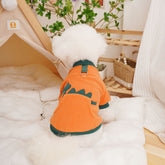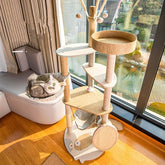The Journey of Adopting an Older Cat: Finding Connection with Yuki
Table of Contents
- Key Highlights:
- Introduction
- Understanding the Commitment
- Initial Struggles and Bonding Challenges
- Establishing Comfort Zones
- The Impact of a Loving Approach
- Maintaining a Trusting Relationship
- Emotional Rollercoaster of Adoption
- Hope and Progress Over Time
- Final Thoughts on Adopting Older Cats
Key Highlights:
- Adopting older cats often presents unique challenges, requiring patience and understanding to establish trust.
- Successful bonding with a shy cat can take time, typically ranging from a few weeks to several months, and requires attentive interactions tailored to the cat's comfort level.
- A poignant tale of a cat named Yuki illustrates the common concerns and victories of adopting a timid feline, showcasing the gradual process of overcoming initial fear and forging a meaningful companionship.
Introduction
Adopting a pet is a deeply rewarding experience, yet it is not without its hurdles—particularly when it comes to older cats who may carry the weight of past traumas. While kittens are often seen as the ideal choice due to their playful nature and adaptability, many animal lovers recognize the beauty inherent in older cats. These cats, sometimes overlooked in shelters, have unique personalities shaped by their life experiences, often requiring a different approach when it comes to acclimating to a new home.
In this article, we explore the profound but challenging journey of adopting an older cat, focusing on the story of Yuki, a four-year-old British Shorthair, and the lessons learned along the way. This narrative not only sheds light on the emotional rollercoaster faced by new owners but also offers practical guidance for those who may be hesitant about adopting an older feline companion.
Understanding the Commitment
Adopting an older cat, like Yuki, involves an understanding that their past can significantly affect their behavior. Often, these cats have lived in various environments that might not have fostered security or love. For Yuki, her early years were spent in a cattery where she was subjected to breeding, which likely instilled a certain wariness towards humans. Recognizing and acknowledging this is crucial for potential adopters.
As potential cat parents consider adoption, it is vital to reflect on what they can offer in terms of patience, understanding, and unconditional love. Yuki’s story illustrates how her initial nervousness and shyness were simply reflections of her past experiences.
The Adoption Decision
Many animal shelters and rescue organizations emphasize the importance of matching pets with their owners. When the decision to adopt Yuki was made, her new owner was filled with hope for a loving companionship. However, this initial excitement sometimes clashed with the realities of adopting a cat that had previously shown signs of sorrow or trauma.
Would Yuki be able to bond with her new family? Would she enjoy the affection that many anticipated giving her? These questions weighed heavily as the adjustment period began.
Initial Struggles and Bonding Challenges
After bringing Yuki home, the initial interactions were tentative. Newly adopted cats often experience a period of adjustment where they may hide or display withdrawn behavior. Yuki was no exception. She gravitated towards corners of the house, opting for distance rather than affection. Common progress markers might include sharing space or showing curiosity about her new surroundings, yet Yuki’s behavior suggested deeper fears that required more nuanced handling.
This was not merely an issue of shyness; it was a protective instinct born from past experiences. For a new owner, seeing their cat retreat into secluded spaces can be disheartening, potentially leading to feelings of disappointment and guilt. Questions may arise: "Am I doing something wrong?" or "Did I pick the wrong cat?"
The Importance of Patience
Building trust with a shy cat demands time and patience. Owners must understand that every cat is unique, and the dynamics of their relationships can differ dramatically. Yuki's journey over the initial months showcased her fluctuating comfort levels. At first, she would only come out for food and toys, revealing herself only when she felt safe enough.
In understanding Yuki’s behavior, her owner realized the necessity of respecting her boundaries. It became clear that the path to connection with Yuki would require small and gentle steps, allowing her to dictate the pace at which interactions occurred.
Establishing Comfort Zones
The most effective strategies in bonding with a timid cat involve creating a safe and positive environment. For Yuki, this meant establishing safe zones where she could observe her surroundings without feeling threatened. Over time, her owner discovered that engaging her with food, toys, and a calming presence could facilitate progress.
Establishing a routine helped create a sense of predictability that Yuki could rely on. Consistent feeding times and gentle interactions reinforced trust, making it easier for her to acclimate to her new home.
Recognizing Small Victories
As days turned into weeks, incremental changes began to surface. At times, Yuki would observe activities from afar, her body language becoming less tense. She began to come out of hiding for short periods, and to the delight of her owner, she would explore her environment more boldly.
These small victories are crucial for anyone adopting a shy or anxious pet. They signify a gradual building of confidence, reinforcing the idea that trust is achieved through positive interactions. Often, it is at this stage that adopters find themselves grappling with mixed emotions: joy for the progress made, and frustration over the slow pace of trust-building.
The Impact of a Loving Approach
Love and understanding play critical roles in the integration process. Blinkered by initial challenges, it’s easy to lose sight of the progress that an older cat, like Yuki, has made. Continually offering affection, as well as respecting her space, became the foundation for their relationship.
One pivotal moment in Yuki’s journey was a seemingly simple act: the first time her owner heard her purr. This significant milestone arrived around the four-month mark and marked a turning point in their relationship. The sound of purring is a potent indicator of contentment and safety in cats, and for Yuki, it was an affirmation of their evolving bond.
Recognizing Behavioral Changes
The initial shy cat gradually transformed due to ongoing engagement and reassurance. As Yuki became more accustomed to her environment, her behavior started reflecting newfound bravery. Sounds that once sent her scurrying for cover now elicited less fear; she remained curious rather than anxious.
This earned confidence allowed her owner to begin training Yuki, providing structured commands that further reinforced positive reinforcement as a means of interaction. Trust blossomed, and behaviors transformed as Yuki started to explore petting sessions without an overwhelming urge to flee.
Maintaining a Trusting Relationship
For adopters of older or fearful cats, the journey of building trust extends beyond initial progress. Sustaining a loving relationship requires ongoing commitment to respecting boundaries while actively engaging in play and affection. Maintaining a nurturing environment, along with positive reinforcement, underlines the importance of slow, consistent interactions.
Yuki’s journey exemplifies how interactions evolve over time, illustrating the gradual development of security. As her comfort level increased, her affectionate nature started to emerge, allowing for enjoyable moments together. Petting would occur for short intervals, followed by a treat, establishing trust without overwhelming her.
Building Mutual Respect
Continuing to build a relationship based on respect paid off as Yuki learned to communicate her needs. For example, her owner learned to interpret swats and body language as signals of discomfort or boundaries. This mutual recognition of limits is essential for any successful pet-owner relationship, especially in scenarios with rescued or shy animals.
As the bond matured, routines involving calm voices and gentle touches fostered a reassuring atmosphere for Yuki. Learning to gauge her reactions allowed for more enriching and less stressful interactions.
Emotional Rollercoaster of Adoption
The emotional journey of adopting an older cat like Yuki can lead to a variety of feelings, including joy, fear, hope, and sometimes guilt. There are moments of frustration and self-doubt—thoughts of whether one has made the right decision in adopting a particular cat may frequently surface.
However, these feelings are natural and part of the journey of animal adoption, particularly with cats who have faced adversity. Recognizing that disappointment is a common experience can help new pet owners navigate the initial hurdles.
Understanding Disappointment
Feeling disappointment when a cherished ideal doesn’t materialize is understandable. Many new cat owners envision a warm and cuddly feline instantly, but with shy or traumatized cats, that fantasy might not match reality. Such discrepancies can lead to self-questioning and possible regret.
However, reframing these thoughts can help adopters focus on the journey itself rather than just end goals. With patience and commitment, many are able to transform their relationships with their adopted cats, ultimately developing deep and meaningful connections.
Hope and Progress Over Time
In retrospect, the experience of adopting Yuki encapsulates countless stories shared by cat owners around the world. The gradual evolution from fear to blossoming trust captures the essence of animal companionship. Hope is paramount in this endeavor—every small success feeds into a larger narrative of growth and connection.
The resilience shown by both Yuki and her owner serves as a testimony to the healing power of love. By allowing a cat to dictate her pace and fostering consistent forms of gentle interaction, the owner was able to witness a transformation that extended far beyond simple companionship.
The Role of Community
Sharing experiences allows prospective pet owners to learn from one another. Engaging with communities—whether online forums, support groups, or local shelters—offers valuable insights and encouragement. Knowing that others have faced similar challenges affirms that the bond formed with a shy pet can evolve into a respectful and loving relationship.
Final Thoughts on Adopting Older Cats
Adopting an older cat is a unique journey filled with highs and lows. Whether faced with initial struggles or enjoying moments of joy, it's critical for new cat owners to recognize the importance of patience and nurturing. Every feline has its own story, and their integration into a new family should be viewed as a collaborative process rooted in respect and bond-building.
Giving Cats a Second Chance
Yuki’s journey serves as a reminder of the beauty present in adopting older pets. Her story testifies to the transformative potential of compassion and understanding. On this path, the slow and steady nurturing of trust can lead to the fulfillment of every cat owner’s dream of a cherished companion.
In choosing to adopt a cat like Yuki, owners not only provide a home for an animal in need but also discover a profound source of love that flourishes in unexpected ways.
FAQ
What should I expect when adopting an older cat?
Adopting an older cat can involve patience as they may need time to adjust to their new environment. Many older cats come with set habits and personalities shaped by their past experiences. You might encounter shyness, but with consistent love and understanding, they can adapt and flourish.
How can I help my shy cat adjust?
Creating a calm and secure environment is key. Allow your cat space to explore at their own pace while introducing them to family life gradually. Use treats, toys, and gentle interactions to encourage engagement without overwhelming them.
What if my new cat is scared of me?
Fearful behavior is common in newly adopted cats, especially those with past trauma. Respect their boundaries, giving space and time for them to trust you. Engage in gentle interactions, speaking softly, and allowing the cat to come to you when they are ready.
How long does it take for a shy cat to bond with their new owner?
The bonding timeline varies significantly between individual cats and their past experiences. Some shy cats start to bond within weeks, while others may take months to establish trust. Patience is crucial, and progress should be recognized as a victory, no matter how small.
Is it normal to feel disappointed when adopting a cat?
Yes, it is common for new pet owners to experience disappointment if their expectations do not align with the reality of their pet's behavior. Understanding that the relationship will take time to develop can help mitigate these feelings. Focus on the progress being made and find joy in every small success.
By taking the time to prepare for the challenges of adopting an older cat, you can create a loving home that transforms the lives of both you and your feline companion. Together, you can embark on a meaningful journey filled with trust, love, and understanding.





